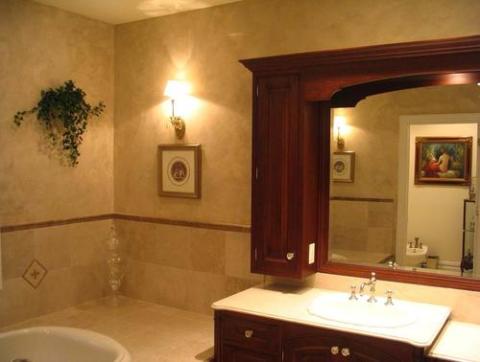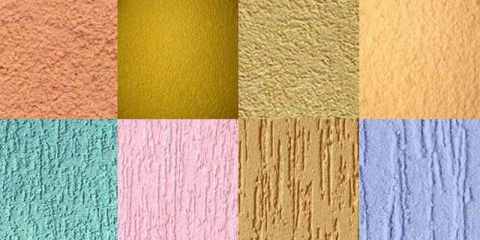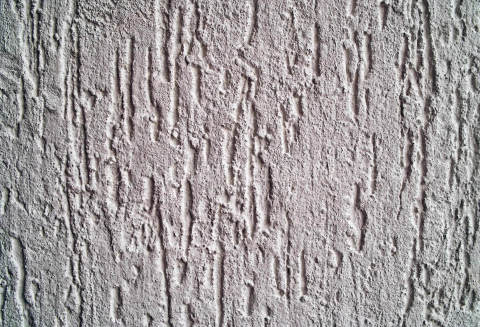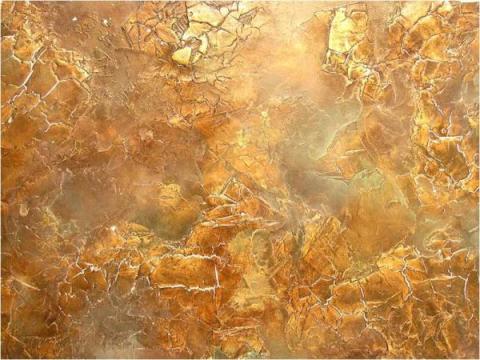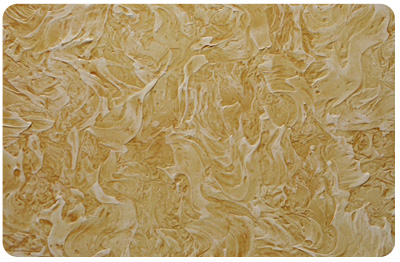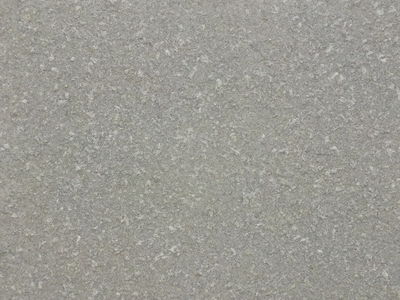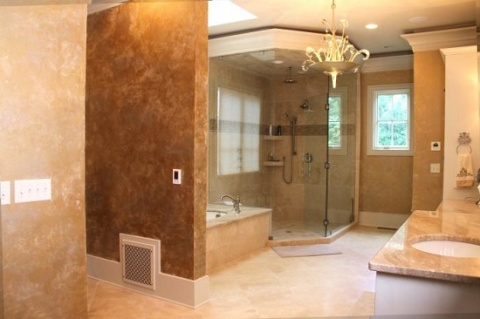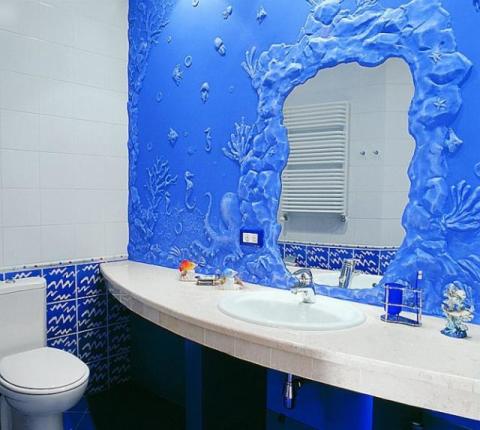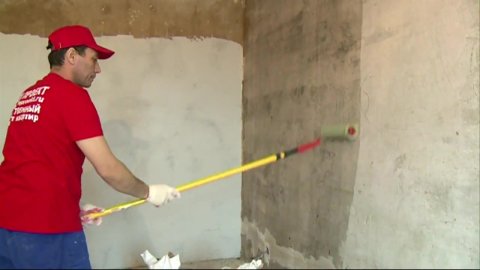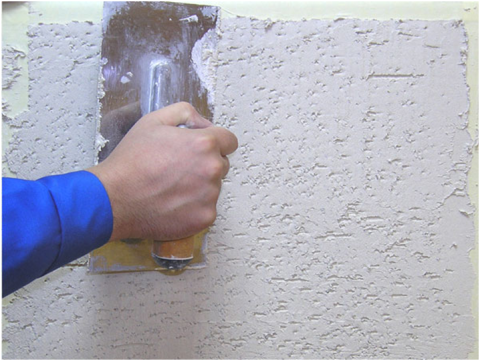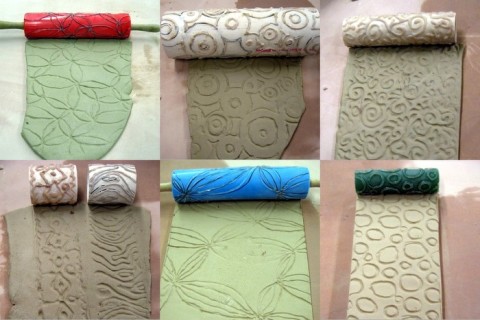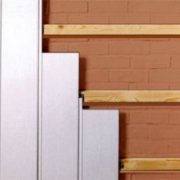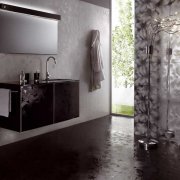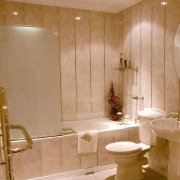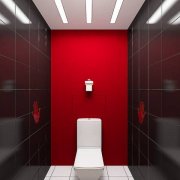Decorative plaster in the bathroom - types and methods of application
Decorative plaster for a bathroom is on sale in construction stores and it will not be difficult to get it. But you still have to make the right choice, because she has several types. And after that apply according to the technology, the quality of the coating and its service life will depend on this.
Decorative plaster for bathrooms today will be considered by us and after that you can not only choose it, but also apply it correctly with your own hands. Then the price of coverage will be much lower.
The content of the article
Pros and cons of decorating bathrooms with decorative stucco
A few years ago bathroom decoration was a big problem due to the lack of materials for rooms with high humidity. The modern market offers a large selection of such products. Decorative plaster in the bathroom appeared not so long ago, and just such a material.
Caution: Acrylic base and special additives make it impervious to moisture and fumes. Even with a long service life, it does not lose its appearance under the influence of temperature fluctuations and humidity.
In addition, there are a number of advantages:
- The ability to absorb steam and moisture from the air when it is excessive, and give it away in dry air. Does not possess this property tile, which has traditionally been used to decorate bathrooms. Thanks to this, you will get a comfortable microclimate in the bathroom even when taking water procedures.
- Easy and easy care. Decorative plaster tolerates cleaning with detergents using sponges and brushes. Now virtually all types of decorative plaster are anti-static treated, so the dirt practically does not settle on them.
- With its help, you can create an author’s interior, reproduce the look of stone, wood and other natural materials. The beauty and appearance of the coating depends on the quality of application. If you do not have experience in this matter, entrust the decoration with decorative plaster to specialists and then the bathroom will delight you with a unique and rich interior.
Decorative plaster for the bathroom has its drawbacks, they include the high cost of this type of finish. The price, although affordable, is slightly higher than other types. As already noted, the process is time-consuming and requires professional skills. Therefore, the involvement of specialists will also increase the cost.
If for some reason you want to remove decorative plaster, then get ready for a dusty and time-consuming process. This can also be attributed to the disadvantages of this type of finish.
What type of decorative plaster to choose
Decorative plaster in the bathrooms can be applied in several types.
They have different characteristics and, first of all, it is necessary to make a choice in this direction:
Silicate Plaster | Decorative plaster in the bathroom of this type is the strongest. The operational life is almost sixty years. Silicate-based plaster is moisture-proof, with good vapor permeability and has refractory and antiseptic properties, which is very important for rooms with high humidity. |
Mineral plaster | Well established for decorating bathrooms. The material is vapor permeable, which helps maintain a comfortable microclimate in the bathroom. The service life of this type of coating is up to thirty years. |
| It has good moisture resistant characteristics, plastic and easy to use. The service life is fifty years. |
Rules for the use of decorative plaster
Decorative plaster in the toilet and bathroom can be applied on almost any basis. Just the surface needs to be carefully and thoroughly prepared. And this is done with sanitizing plaster. She not only aligns them. Thanks to it, the walls acquire the ability to absorb moisture. This is a variant of a cement mortar with the addition of elements that provide the indicated properties with a decorative plaster surface in the bathroom.
It:
- Water resistant. After drying, a thin layer of protective film appears on the surface, which prevents the penetration of moisture.
- Resistance of this composition to scaling. Prevents the occurrence of salt deposits, which have a destructive effect on materials. This is typical for cement-based solutions.
- High hygroscopicity contributes to a comfortable microclimate in the bathroom.
It must be said that sanitizing plaster is relatively easy to apply to the surface. This work can be done independently, without resorting to professional plasters. It must be remembered that we are now considering a working mixture that only smoothes the surface and gives it the necessary characteristics, and does not solve the decoration problem.
Finishing Methods
The technological process of manual plastering of the walls of the bathroom actually has no differences from the usual surface finish indoors. Differences appear only at the final stage, when a final layer of decorative plaster is applied to the leveling layer with waterproofing.
And for applying it, use the following methods:
Homogeneous option | Using crumpled paper placed in a plastic bag, a foam sponge or an ordinary broom, a relief is printed that looks like leather with small pimples. This should be done on wet plaster. |
Furrowed version of the plaster | With a simple trowel, we perform punching on a fresh layer, thereby simulating masonry made of stone or brick. |
Grungy version of plaster | When large fractions of elements are added to the working solution and when applied to the wall, it is smoothed with a simple grater in the vertical and horizontal directions, forming characteristic grooves. |
| It is carried out by successively applying layers of special mixtures with different color shades. Next is repeated grouting and scraping. This simulates natural masonry. This is the most difficult of the methods considered. | |
Lesion plaster | A bewitching and unusual effect of antiquity and a blurred background. |
Flock coating | It impresses with mosaic tiles. |
Multicolor for decoration | Creates a balsa wood surface. |
An inimitable interior can be created using ready-made stencils that are offered by hardware stores.
Choose the type of decorative plaster
Carrying out all the preparatory work makes it possible to choose any type of decorative plaster. There are no limiting factors, but it is desirable to know the differences in the available samples.
Venetian
Refers to smooth types of decorative plaster and is unlimitedly used for decorating bathrooms.
It:
- Glossy coating repels water. It rolls down without harming the coating itself.Imitates a natural stone, most often marble.
- The quality of the pattern will depend on the size of the particles of marble or quartz dust. The smaller they are, the drawing will be softer and more beautiful.
- Slaked lime, which serves as its binder, will be an integral component of the solution. Do not count on special variety.
- For the most part, you will have to choose only from the color palette and this or that effect (an example of a cracked surface).
- Previously, the solution was stained using clay. Today, to obtain the desired color, acrylic additives are used.
- Using handmade stencils and drawings made independently, you can diversify the range. But this will inevitably increase the price of the work, although this can be attributed to any kind of finish.
Structural plaster
It can be attributed to multiple textured plasters: "fleece", "fireclay", "bark beetle", "frost". They include mineral elements and quartz sand.
- With a spatula or trowel, a drawing is performed, depending on the size of the inclusions and the direction of movement of the tool. Such work requires special skills. Until the surface is grasped, the drawing can be edited and adjusted.
Attention: Experiment and do not forget that having dried the surface will become more expressive than during application. The plane acquires a “pebble” effect.
- It looks very beautiful, it seems that the wall is made of solid seamless stone. It is very important to observe the principles of applying such a finish. The main disadvantage is irregularities in which droplets of water are retained. The service life of such plasters is less than that of smooth ones. Although in the short term, such a structure does not have a big impact on the condition of surfaces.
What is it necessary to pay attention, first of all, when choosing these types of plasters for finishing a bathroom?
- The market offers both dry mortar and ready-made compounds. Keep in mind that working with ready-made products is complicated by the fact that they are forbidden to be diluted with water, and therefore it will be difficult to obtain the desired consistency.
- Coarse-grained solutions are applied strictly by hand. It is very difficult to work with compositions that include various fillers. If you still decide to make your own finish, it is better to abandon the use of such mixtures.
- It is preferable to use non-water based plasters. On the one hand, they do not emit harmful substances and are safe, and on the other, they have poor permeability. This deficiency can be corrected by applying a special wax composition to the surface, after the leveling layer has completely dried.
Mixtures that do not have water in their composition are not always safe, although their service life is incomparably longer. To repair lived up to expectations, before purchasing plaster, be sure to evaluate all the advantages and disadvantages of this type.
Features of applying plaster
Instructions for applying decorative plaster in bathrooms do not have significant differences from similar in other rooms.
It is recommended to focus on the following:
- The walls in the bathroom should be primed with particular diligence and more than once. After all, its task is not only to strengthen and hold the surfaces together, but also to protect them from water penetration. Apply the first layer abundantly and wait for it to dry completely, the second is applied right before applying the plaster and serves to completely remove dust. The choice of type of primer is very important. Most often it is a soil with quartz sand, which many times increases the adhesion of decorated surfaces.
- The process of applying the soil also varies. The solution applied to the surface is properly tamped with a grout. This must be done while the solution dries with a steel spatula or trowel.Otherwise, this process is called ironing.
- After that, the plaster itself is applied.
- Now it will be necessary to apply the desired relief. For this, various stamps or masters are used. This is done with a simple spatula.
- Controlling surface drying is another hallmark. The initial drying time of decorative plaster in the bathroom is 3-5 hours. But during this time, the walls do not yet acquire the necessary characteristics.
- Relatively normal use of the bathroom is possible only after the incident 72h. If you can do without a bath, then it is better to extend this period to a week. By this time, the polymerization of the plaster ends and the walls acquire the necessary characteristics.
Attention: The statement that decorative plaster is unsuitable for decorating bathrooms is erroneous. If the technological process is followed and everything is done properly, then its operational life is comparable with the service life of tile.
Is it possible to apply decorative plaster in the bathroom now and you can easily do it yourself. The videos in this article will help you do everything quickly and efficiently.
